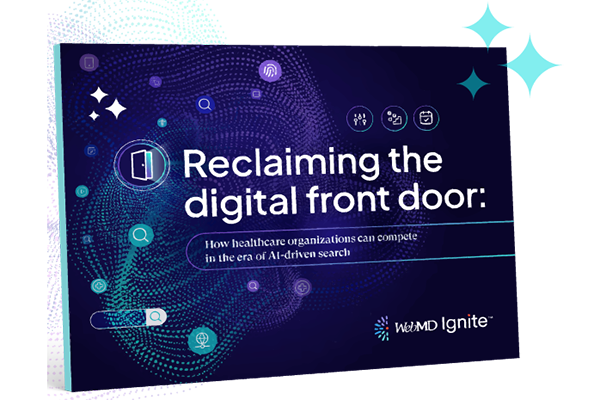Celebrating Pride Month and Providing Equitable Care
June is Pride Month, and it’s a time to recognize and celebrate the LGBTQ+ community. One important way to show our support? By working toward health equity for LGBTQ+ people and helping to alleviate their health care challenges.
Cody, a transgender teen, shared his story. In his early teens when he began transitioning, Cody was unsure how his longtime family doctor would react to his situation.
“My mom and I were kind of scared to tell our family doctor that I was trans,” said Cody. “My doctor was an older woman who had mentioned several times that she was active in her church, and there wasn’t anything in her office showing whether she’d welcome LGBTQ+ patients.”
Cody’s parents finally decided to switch the entire family—all six of them—to a new provider who had been recommended by several members of a transgender support group.
“My old doctor might have been okay with me, but who knows?” Cody said. “I wasn’t looking for a giant pride flag or anything, just a few same-sex couples in photos, or some gender-neutral language in the stuff she printed out for me. That would have been enough for me to trust her with my news.”
Cody’s story reflects a reality for LGBTQ+ people and their health care. He was able to find a new doctor who he knew would understand his situation, but many people face discrimination that negatively affects their care and, ultimately, their health.
Health challenges for the LGBTQ+ community
LGBTQ+ adults experience more discrimination in daily life compared to non-LGBTQ+ adults–and just like for Cody, this carries over into their health care experiences. In fact, the National Institutes of Health (NIH) identified sexual and gender minorities as a “health disparity population.”1 This designation is intended to encourage support and research, and studies have found that these groups do, indeed, face discrimination in health care, which ultimately results in poorer health outcomes.
In one study, 61% of LGBTQ+ adults said they had a negative experience with a provider, and one-third of LGBTQ+ adults said a health care provider treated them unfairly or with disrespect. On top of that, LGBTQ+ people were more likely to report they did not feel psychologically safe with their providers. Compared to non-LGBTQ+ people, almost twice as many LGBTQ+ people reported their providers had not believed them, suggested they were personally to blame for a health problem, assumed something without asking, and dismissed their concerns.3
Research shows that these kinds of negative experiences can affect their health. Twenty-four percent of LGBTQ+ adults who reported negative health care experiences pointed to those experiences for making their health conditions worse, with 39% saying the negative experiences made them less likely to seek care, and 36% saying their negative experiences led them to switch health care providers.2
Mental health is another important consideration. For LGBTQ+ people, discrimination only makes their mental health challenges worse. Those who have experienced discrimination in their daily lives are twice as likely to say they feel anxious, lonely, or depressed.2 LGBTQ+ youth are also more likely to think about, attempt, and die by suicide than youth who are not part of the LGBTQ+ community.3 And overall, LGBTQ+ people are more likely than non-LGBTQ+ adults to skip needed mental health care.2
How can we make sure LGBTQ+ people receive the best care?
So what can we do to make sure we’re not perpetuating these negative experiences? The first step is offering inclusive care. Don’t make assumptions about people. For example, use gender-neutral words like “partner” instead of “husband” or “wife.” Ask questions instead of assuming. Gender and sexuality can’t be assumed by looking at a person or their body.
Good communication not only provides more knowledge about people but can also improve psychological safety. Some providers may be hesitant to bring up sexual preferences, but one study showed that 90% of patients are not afraid to talk about their sexuality with their providers.4 This indicates that most people are willing to provide information that’s necessary for the best care, they just need to be asked.
Using inclusive health education is another way to improve health care for the LGBTQ+ community. When people see themselves reflected in health education content, they’re more likely to trust and engage with that content. Representation matters, and the accessibility and relevance of health education directly lead to better comprehension and outcomes.
For example, although LGBTQ+ representations and inclusivity can be tricky to visually represent, WebMD Ignite’s illustrations use person-first, gender-inclusive language in labeling. This means a focus on anatomy first, and not prescribing the gender identity of the patient (such as saying "female pelvic anatomy" not "pelvic anatomy of female"). Our content also includes illustrations specific to gender-affirming care such as top surgery. As with all our content, we seek to represent diversity and the broad range of features, skin tones, body types, and abilities of all patients.
Remember Cody? Cody’s story shows why health education should be inclusive. He mentioned that even small indicators of an accepting, inclusive environment would have made him feel comfortable sticking with his doctor for the care he needed.
Although providing focused LGBTQ+ content is important, don’t stop there. Ensuring that every piece of material you share and every conversation you have makes your patients feel wanted and valued will help you build the trusting patient-provider relationships that lead to open conversations and better health.
Sources
1. https://www.kff.org/report-section/lgbt-peoples-health-status-and-access-to-care-issue-brief/
3. https://psnet.ahrq.gov/perspective/patient-safety-concerns-and-lgbtq-population




